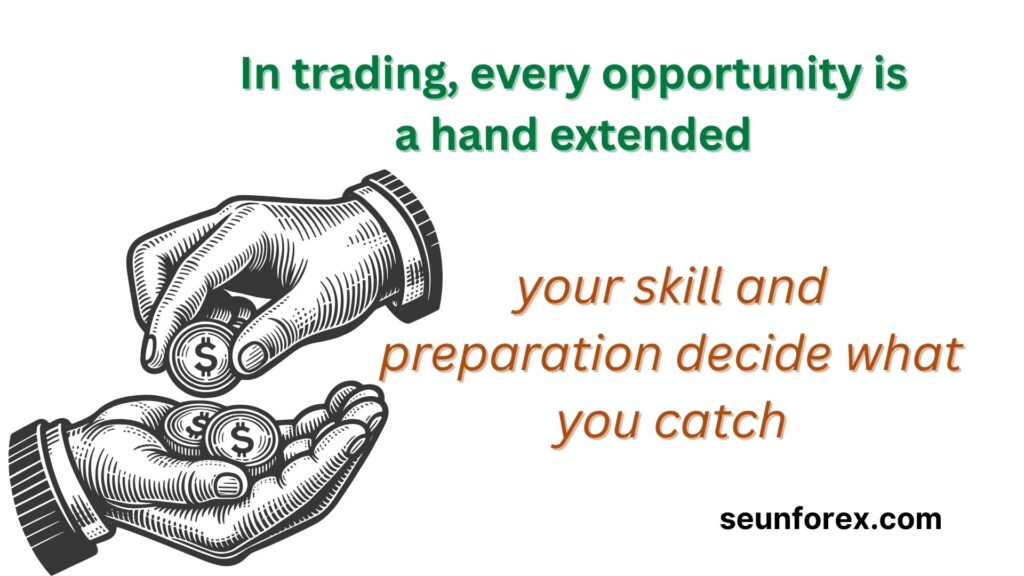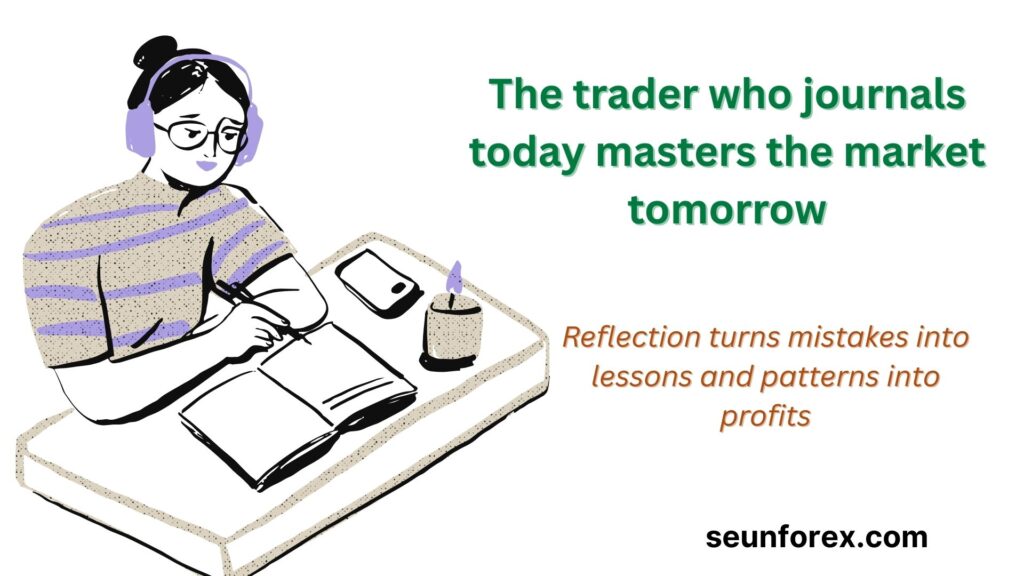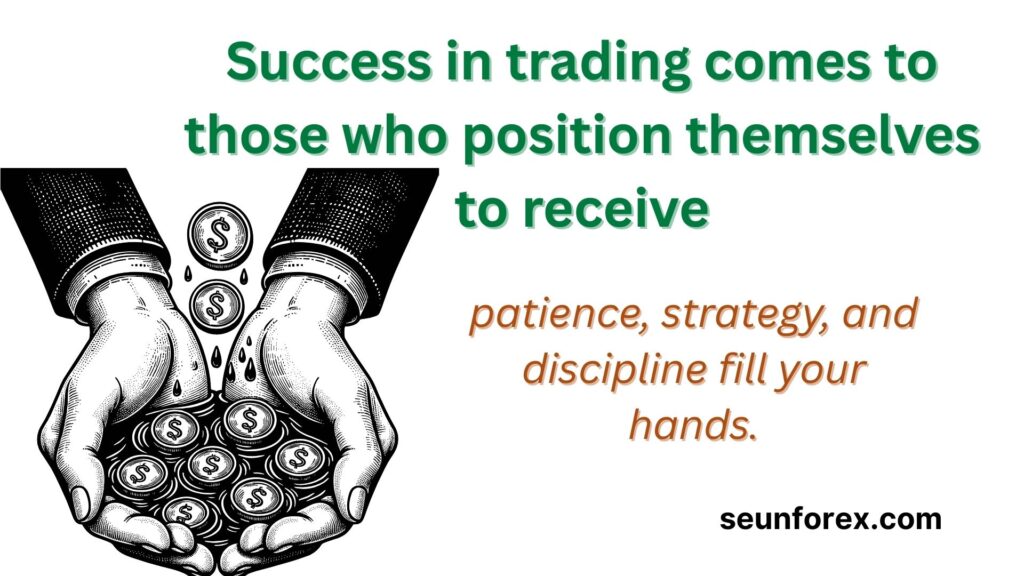
Trading Career can feel like a rollercoaster. A lucky trade gives a rush, a string of losses can crush confidence, and most traders burn out within their first year. The difference between amateurs and professionals is sustainability — the ability to grow capital, skills, and discipline steadily over time.
This guide explores how to build a Trading Career that lasts decades, not just days, with practical strategies, mindset lessons, and real-life examples from experienced traders.
🧠 Step 1: Shift From Lottery Thinking to Process Thinking 🎯
Most beginners approach trading as if they’re buying a lottery ticket. They hope for the one trade that will change everything, chasing big wins based on gut feelings, tips, or “hot signals.” This mindset is lottery thinking, and it’s the fastest route to account blowups and frustration.
Professional traders, in contrast, focus on process thinking. They understand that trading is not a single event but a series of repeated decisions where consistent execution matters far more than any single outcome. Profit is a byproduct, not the obsession.
“Trading isn’t about hitting the jackpot; it’s about stacking small edges consistently over time.”
Case Study 1: David’s Wake-Up Call 💡
David, a beginner forex trader, lost $12,000 in three months chasing volatile news trades. He was following “hot tips” and reacting to headlines, hoping to catch a massive swing. Every time he lost, he doubled down — a classic lottery mindset.
Then he switched to a simple rules-based strategy, focusing on high-probability setups and managing risk carefully. After six months, his account showed a steady 25% growth, and his emotional state improved drastically. He was no longer chasing luck — he was compounding skill.
Lesson: One lucky trade is fleeting. A solid process compounded over months and years builds wealth, confidence, and sustainability.
Why Lottery Thinking Fails ⚠️
- Emotion Overrides Strategy: Chasing the “big win” triggers fear and greed, the two emotions most likely to destroy accounts.
- Inconsistent Execution: Without a repeatable process, every trade is ad hoc. Winners are random, losers are inevitable.
- Burnout: Constant highs and lows create stress that eventually forces traders out.
How to Shift to Process Thinking 🔄
Step 1: Identify Your Edge
Every professional trader has a defined edge — a setup or strategy that statistically gives them an advantage. Without an edge, you are gambling.
Example: A trader notices that a certain candlestick pattern yields a 60% win rate in trending markets. That becomes her edge.
Step 2: Define Rules, Not Hopes
Set entry, exit, and risk rules. Every trade is evaluated against these rules, not emotions.
Example: “Enter long only if the price breaks above the previous day’s high and volume is above the 20-day average. Stop-loss at 1% below entry.”
Step 3: Focus on Repetition, Not Results
Measure success by process adherence, not profit on any individual trade.
- Track metrics like: “Did I follow my plan 100% today?”
- Ignore account swings in the short term; focus on cumulative skill improvement.
Step 4: Accept Small Wins and Small Losses
Consistency beats occasional windfalls.
Example: Winning 55% of trades with strict risk management will outperform chasing 90% wins sporadically with high risk.
Mini Exercise: 📝
- Review the last 20 trades in your account.
- Identify how many were based on rules vs. impulse.
- Create a simple checklist for your next 20 trades that enforces process adherence.
- Record only adherence to the process for 2 weeks; ignore profit and loss.

Psychological Angle 🧠
Trading psychology books often emphasize mindset, but few show how to apply it in real trades. Process thinking is the bridge between knowledge and action. It’s the difference between reading about risk management and actually protecting your account during volatility.
“You cannot control the market. You can only control your behavior. That’s the essence of professional trading.”
Case Study 2: Anna’s Transformation 🌟
Anna, a stock trader, was constantly switching strategies based on “hot trends.” She never gave any system enough time to work. After adopting process thinking and documenting her trades, she realized that her original breakout strategy had been profitable all along. By committing to repetition, she reduced emotional trading and doubled her account over a year without increasing risk.
Key Takeaway: Process thinking transforms traders from gamblers into professionals. Sustainability begins with rules, discipline, and repetition.
📈 Step 2: Build a Journal That Becomes a Map 🗺️
Trading without a journal is like trying to navigate a city blindfolded. Every trade, every emotional reaction, every tiny mistake is a clue — a breadcrumb that can guide you to better decision-making if recorded and analyzed.
“A trade not logged is a lesson wasted.”
The journal isn’t just a diary; it’s your map to consistency, insight, and compounding skill. Most traders focus solely on profits, but the real gold is in understanding your behavior and patterns over time.
Why Journals Matter 📊
- Mistakes Become Lessons: Every losing trade is data. Without recording it, patterns repeat silently.
- Wins Become Guides: Analyzing why a trade succeeded reinforces replicable behavior.
- Emotions Become Visible: Journals reveal emotional triggers — the unspoken forces driving impulsive trades.
- Long-Term Perspective: Tracking trades over months and years allows you to see trends that individual trades obscure.
Case Study 1: Sarah’s Hidden Patterns 🔍
Sarah was an active day trader, logging only profits and losses. Her account fluctuated wildly. When she started logging emotions, setup conditions, and reasoning, she noticed a subtle but consistent pattern: she over-traded after small wins.
After adjusting her routine and setting daily maximum trade limits, her impulsive trades dropped by 70%, and her monthly returns stabilized.
“The journal turned invisible mistakes into visible action points.”
How to Build a Journal That Works 📝
Step 1: Record Every Trade in Detail
Include:
- Entry and exit points
- Position size and risk per trade
- Reasoning for taking the trade
- Market conditions and news context
- Emotional state before, during, and after the trade
Step 2: Review Consistently
Weekly and monthly reviews reveal trends, recurring mistakes, and setups that work. Don’t just glance at profits — look for process adherence.
Step 3: Add Visual Data
Charts, patterns, and graphs of trade outcomes can reveal subtle edges.
Example: Highlight setups that yield above-average returns
Example: Mark trades where emotions overrode strategy
Step 4: Create Actionable Notes
Don’t just record — plan improvements.
- “Next week, avoid trading during high-stress mornings.”
- “Focus only on setups with confirmed trend and volume.”
Mini Exercise: The Journal Blueprint 📚
- Open a notebook, spreadsheet, or trading app.
- Record 5–10 trades in full detail for the week.
- At week’s end, review:
- Which trades followed rules?
- Which trades were emotional?
- What recurring mistakes appear?
- Adjust next week’s trading plan based on insights.
The Psychology Behind Journaling 🧠

Humans remember emotional highs and lows, not details. Without a journal, the brain exaggerates wins, downplays mistakes, and hides patterns. Journaling externalizes memory, giving clarity to your decision-making.
“Your journal is your personal mentor — it teaches when the market doesn’t.”
Case Study 2: Michael’s Slow Climb to Consistency ⏳
Michael, a swing trader, struggled with inconsistent profits. He began journaling every trade with notes on his mindset, distractions, and timing. Over 12 months, he realized that certain patterns — like trading immediately after market open — were costly. By avoiding those trades, he reduced losses by 35% and steadily improved monthly gains.
Key Takeaway: A trading journal transforms reactive behavior into measurable, improvable skill. It’s the bridge between luck and longevity, between impulse and strategy.
⏳ Step 3: Think in Decades, Act in Days ⏱️
The sustainable trader understands a simple but powerful truth: trading isn’t about today; it’s about decades of disciplined action. While beginners obsess over daily profits or the next “big win,” professionals focus on building compounding skill, capital, and emotional resilience over years.
“Successful trading isn’t measured by one lucky trade, but by the cumulative effect of thousands of disciplined decisions.”
The Power of Compounding in Skill and Capital 📈
Most traders think of compounding in monetary terms, but the same principle applies to skill, confidence, and emotional control. A 1% improvement in skill each day compounds exponentially. Over 1,000 trading days, small, consistent improvements create mastery that dwarfs any short-term luck.
For traders looking to deepen their knowledge and build the skills that compound over time, check out our Best Forex Trading Books for Beginners 2025 — these books provide foundational strategies and mindset guidance to accelerate your trading journey.
Example: Consider two traders:
Trader A seeks 20% monthly gains with high-risk trades. His results are volatile — big wins followed by devastating losses.
Trader B improves by 1% daily in strategy execution, emotional control, and risk management. After 1,000 trading days, Trader B’s skills, returns, and confidence compound far beyond Trader A’s short-lived spikes.
The lesson is clear: time in the market isn’t just for money—it’s for learning, refining, and mastering the craft.
Case Study: Emma’s Long Game 🎯
Emma, a young forex trader, initially chased short-term profits, reacting to market noise. Her account grew quickly at first, but repeated impulsive decisions eroded gains.
She shifted focus:
- Daily Execution: Commit to a checklist of high-probability trades.
- Weekly Review: Identify recurring mistakes and adjust routines.
- Monthly Reflection: Track emotional patterns and rule adherence.
Within a year, she wasn’t the fastest growing account, but she became consistent, resilient, and profitable — the hallmark of a sustainable Trading Career.

How to Think in Decades 🏛️
1. Set Long-Term Goals
- Example: Instead of aiming for a 20% monthly return, aim to increase risk-adjusted returns year over year.
- Track progress through metrics like win rate, average risk per trade, and process adherence.
2. Break Goals Into Daily Action
- Small, deliberate actions compound into large results.
- Example: Spend 30 minutes daily reviewing charts, journaling, and refining strategy instead of obsessing over price swings.
3. Embrace Patience
- Wealth, skill, and confidence in trading grow slowly.
- Resist the temptation to overtrade or chase fast results.
- Focus on building a foundation that can support decades of market cycles.
The Psychological Edge: Patience as a Skill 🧘
Humans are wired for instant gratification. The market exploits impatience. Traders who internalize long-term thinking develop:
- Emotional resilience: Less affected by daily swings.
- Strategic clarity: Able to follow plans instead of reacting impulsively.
- Confidence in process: Trusting their rules rather than luck.
“Time is the greatest ally of a disciplined trader.”
Mini Exercise: Decades vs. Days 🗓️
- Write down your 10-year trading vision: account size, skill level, lifestyle integration, emotional control.
- Break it into yearly milestones: process mastery, capital growth, journal habits.
- Translate milestones into daily actionable steps: journaling, reviewing setups, studying markets, meditation, and trade execution.
- Track adherence to daily actions for at least 90 days before evaluating profit.
Key Takeaways for Step 3 ✅
- Sustainable trading is a long-game pursuit.
- Compounding applies to skills, habits, and emotional resilience, not just money.
- Daily discipline drives decade-long mastery.
- Patience, reflection, and process adherence are far more powerful than chasing short-term gains.